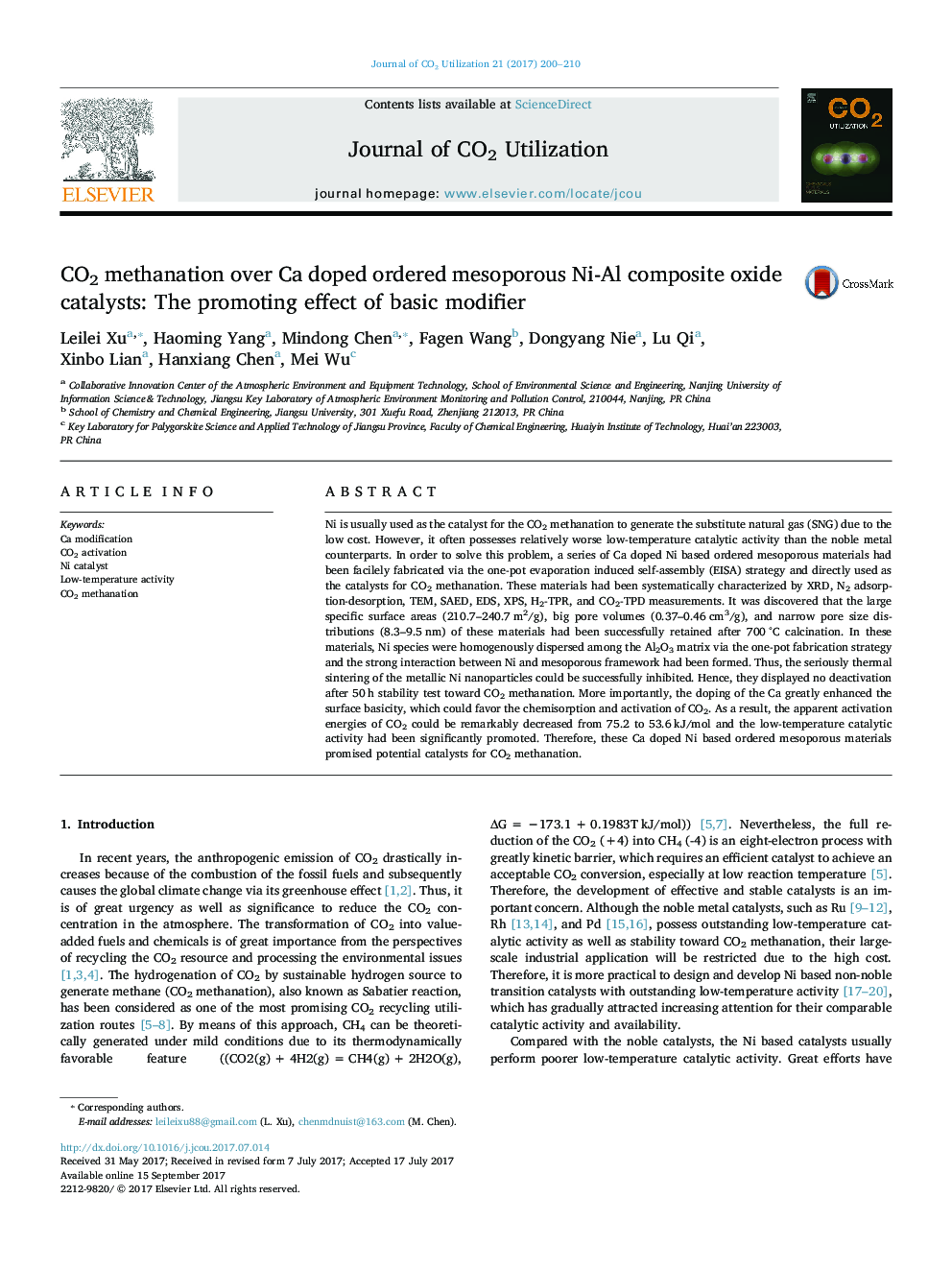| کد مقاله | کد نشریه | سال انتشار | مقاله انگلیسی | نسخه تمام متن |
|---|---|---|---|---|
| 6456050 | 1419841 | 2017 | 11 صفحه PDF | دانلود رایگان |
- Ca doped ordered mesoporous Ni-Al catalysts were fabricated by one-pot EISA method.
- The anti-sintering of Ni was intensified by strong metal-framework interaction.
- The doping of Ca strengthened the surface basic intensity.
- The doping of Ca decreased the apparent activation energy of CO2 methanation.
- The doping of Ca enhanced the low-temperature catalytic activity.
Ni is usually used as the catalyst for the CO2 methanation to generate the substitute natural gas (SNG) due to the low cost. However, it often possesses relatively worse low-temperature catalytic activity than the noble metal counterparts. In order to solve this problem, a series of Ca doped Ni based ordered mesoporous materials had been facilely fabricated via the one-pot evaporation induced self-assembly (EISA) strategy and directly used as the catalysts for CO2 methanation. These materials had been systematically characterized by XRD, N2 adsorption-desorption, TEM, SAED, EDS, XPS, H2-TPR, and CO2-TPD measurements. It was discovered that the large specific surface areas (210.7-240.7 m2/g), big pore volumes (0.37-0.46 cm3/g), and narrow pore size distributions (8.3-9.5 nm) of these materials had been successfully retained after 700 °C calcination. In these materials, Ni species were homogenously dispersed among the Al2O3 matrix via the one-pot fabrication strategy and the strong interaction between Ni and mesoporous framework had been formed. Thus, the seriously thermal sintering of the metallic Ni nanoparticles could be successfully inhibited. Hence, they displayed no deactivation after 50 h stability test toward CO2 methanation. More importantly, the doping of the Ca greatly enhanced the surface basicity, which could favor the chemisorption and activation of CO2. As a result, the apparent activation energies of CO2 could be remarkably decreased from 75.2 to 53.6 kJ/mol and the low-temperature catalytic activity had been significantly promoted. Therefore, these Ca doped Ni based ordered mesoporous materials promised potential catalysts for CO2 methanation.
304
Journal: Journal of CO2 Utilization - Volume 21, October 2017, Pages 200-210
